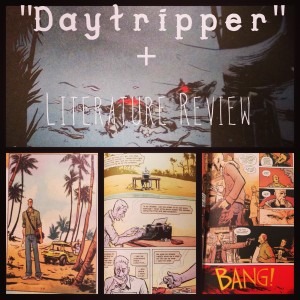Daytripper (2011) is Fábio Moon and Gabriel Bá’s Eisner Award winning comic series (now distributed as a single collection or graphic novel) that tells the life story of Brás de Oliva Domingos in contemporary Brazil. The comic’s subtle movements across Brazil (Río, São Paulo, Bahía and Acemira) create a national story that is told through abrupt 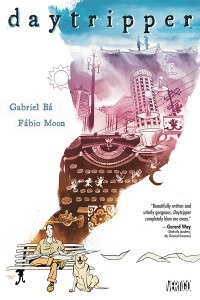 temoral jumps at the beginning of each chapter. The first issue/chapter presents a 38 year old Brás, while issue/chapter 2 tells the story of his visit to Bahía when he was 21 and issue/chapter 5 shows an 11 year old protagonist. This fragmented structure delays the confirmation of expectations and hypothesis developed while reading and the meaning of these events within the context of Brás’ life is not revealed in a straightforward fashion. The importance and meaning of individual events in the protagonist’s life is restrained by not allowing these events to carry over into other sequential segments but their juxtaposition to one another can provided added insight into their echoes and parallels that reach across temporal fragments. Although this non-linear deployment of the fabula through the syuzhet is of interest the graphic novel punctuates the end of each issue/chapter with the death of protagonist and this offers additional material for analysis. Brás is shot, run over by a truck, drowns, gets electrocuted, dies in a car crash, is stabbed to death and has a heart attack among other deaths. He is never resurrected. These deaths are never mentioned in any other chapter, even those that occur after a particular demise. These deaths punctuate and structure the narration of Brá’s life that without these multiple deaths only tells the happy story of a white upper-mild class character that achieves all the goals of contemporary Brazilian bourgeoisie: he becomes a famous author, is financially stable, happily married and has a beachfront house. My upcoming project will analyse the meanings created by reading Daytripper as a critique of the Brazilian bourgeoisie ideal. This critique is revealed in the protagonist’s multiple deaths that become inevitable parts of everyday life in contemporary Brazil.
temoral jumps at the beginning of each chapter. The first issue/chapter presents a 38 year old Brás, while issue/chapter 2 tells the story of his visit to Bahía when he was 21 and issue/chapter 5 shows an 11 year old protagonist. This fragmented structure delays the confirmation of expectations and hypothesis developed while reading and the meaning of these events within the context of Brás’ life is not revealed in a straightforward fashion. The importance and meaning of individual events in the protagonist’s life is restrained by not allowing these events to carry over into other sequential segments but their juxtaposition to one another can provided added insight into their echoes and parallels that reach across temporal fragments. Although this non-linear deployment of the fabula through the syuzhet is of interest the graphic novel punctuates the end of each issue/chapter with the death of protagonist and this offers additional material for analysis. Brás is shot, run over by a truck, drowns, gets electrocuted, dies in a car crash, is stabbed to death and has a heart attack among other deaths. He is never resurrected. These deaths are never mentioned in any other chapter, even those that occur after a particular demise. These deaths punctuate and structure the narration of Brá’s life that without these multiple deaths only tells the happy story of a white upper-mild class character that achieves all the goals of contemporary Brazilian bourgeoisie: he becomes a famous author, is financially stable, happily married and has a beachfront house. My upcoming project will analyse the meanings created by reading Daytripper as a critique of the Brazilian bourgeoisie ideal. This critique is revealed in the protagonist’s multiple deaths that become inevitable parts of everyday life in contemporary Brazil.
With that introduction I want to present a list of texts that I plan to use in developing my analysis. Perhaps this short bibliography can be useful to others interested in studying comics and graphic novels. Of course, if you have any suggestions or recommendations I’d love to hear them in the comments.
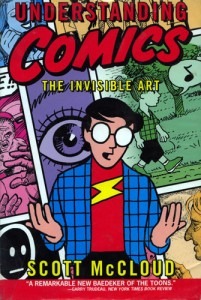 Understanding Comics: The Invisible Art by Scott McCloud –> This is a classic in comic theory. Innovative in that it is an analysis of comics written as a comic – using medium to describe it. This work will be important since it will provide important insight into how to read the juxtaposition of the several parts of Daytripper. McCloud discusses how comic transitions work to create mood and bring the reader into the narration by reading the «gutters» or ellipses in the comic text (when I say text I mean the unified form of written text with images). Daytripper‘s non-linear narration and the artistic layout of its pages requires theoretical tools specific to the medium of the comic to analyse these aspects of the graphic novel’s storytelling.
Understanding Comics: The Invisible Art by Scott McCloud –> This is a classic in comic theory. Innovative in that it is an analysis of comics written as a comic – using medium to describe it. This work will be important since it will provide important insight into how to read the juxtaposition of the several parts of Daytripper. McCloud discusses how comic transitions work to create mood and bring the reader into the narration by reading the «gutters» or ellipses in the comic text (when I say text I mean the unified form of written text with images). Daytripper‘s non-linear narration and the artistic layout of its pages requires theoretical tools specific to the medium of the comic to analyse these aspects of the graphic novel’s storytelling.
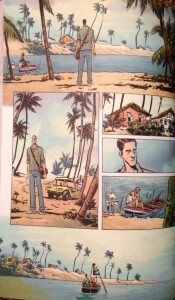
The System of Comics by Thierry Groensteen –> This text proposes two systems for reading and deciphering comic narration which Groensteen calles «Restrained Arthrology» and «General Arthrology» (arthrology meaning the study of articulation). Groensteen’s approach looks at the larger systems in comic narration as opposed to the smaller units of graphic storytelling. In the case of Restrained Arthrology the reading of panels and gutters on a page is analysed while General Arthrology takes into consideration the connections between page designs throughout a comic text that can create visual connections that do not appear in the written text or the fabula in other ways.
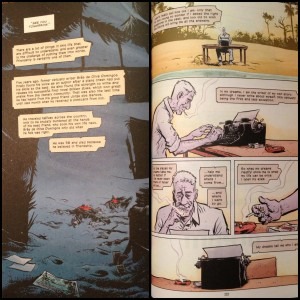
«Invisible Art, Invisible Planes, Invisible People» by Evan Thomas –> Thomas’ chapter from Multicultural Comics: From Zap to Blue Beetle serves as an example of how to carry out an arthrological analysis of a text. The author is capable of transcending both McCloud and Groensteen’s limitation and find very practical applications and fruitful results in this type of reading of a graphic novel. This chapter more than anything is a «how-to» guide for doing an arthrological reading.
«Mônica Power: Comics, Society, Brazil» by Eva Paulino Bueno and Terry Caesar –> This chapter appears in the collection Redrawing the Nation: National Identity in Latin/o American Comics. Although this chapter focuses its analysis on the comic Turma da Mônica the background on the relationship between Brazilian comics and culture looks at how images in comics register forms of cultural and national imaginaries that can be analyzed as expressions of hegemonic ideas or subversions of them.
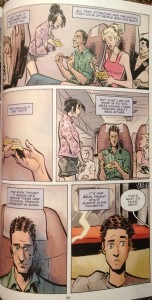
«Brazilian Comics: Origin, Development, and Future Trends» by Waldomiro Vergueiro –> A brief yet rather complete of Brazilian comic history that establishes the place of comics as national products. The last two sections of the chapter discuss how the international market has impacted Brazilian comic and graphic novel production and since Daytripper has had such an impact in the US comic industry it is important to take international influences into consideration on how the nation is represented in this graphic novel. This chapter is also found in Redrawing the Nation.
UPDATE: To read my analysis of Daytripper from San Diego Comic-Con International and the Comic Arts Conference you can click here.

